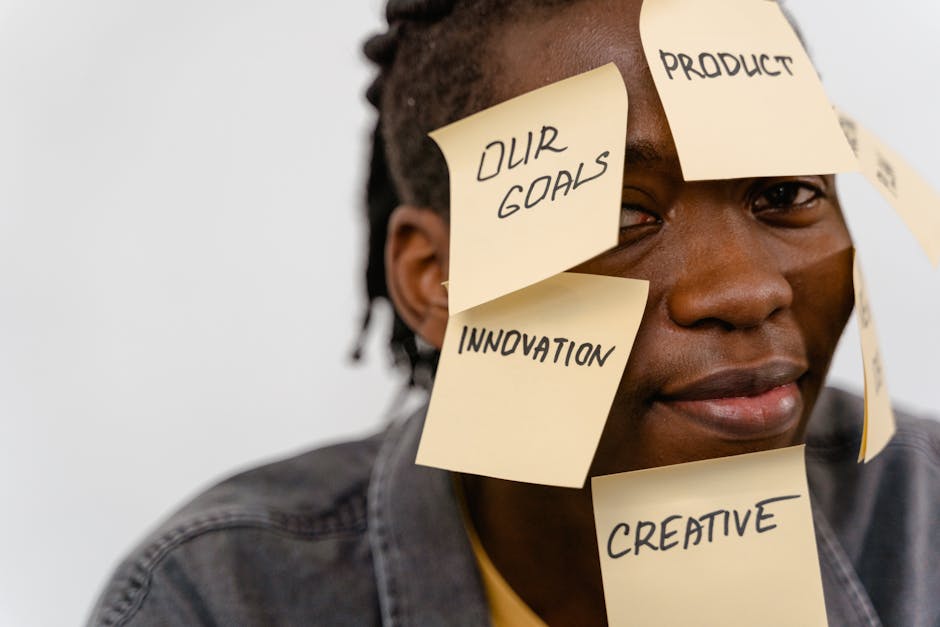Step-By-Step Guide To Designing Your First MVP
Have you ever looked at a beautiful, well-designed house and wondered about the process that went into creating it? Just like a house, designing your first Minimum Viable Product (MVP) requires careful planning and execution. Think of your MVP as the foundation of your product – it’s the starting point from which you’ll build and grow.
In this step-by-step guide, we will walk you through the process of designing your first MVP. We’ll start by helping you define clear goals for your product, allowing you to focus on what truly matters.
Then, we’ll show you how to conduct market research to identify your target audience and understand their needs.
Next, we’ll delve into identifying key features and functionality that will make your MVP stand out in the market. With these insights in mind, we’ll guide you through creating a prototype that brings your vision to life.
But we won’t stop there – gathering user feedback is crucial in refining and iterating your MVP.
By the end of this guide, you’ll have a solid understanding of how to design an effective MVP that meets the needs of both users and stakeholders alike.
So let’s get started – it’s time to turn your idea into reality!
Key Takeaways
- Clear goals and measurable objectives need to be defined
- Understanding the target audience is important
- Assumptions should be validated by testing with real users and gathering feedback
- Incorporating user feedback into the design and development process is crucial
Defining Your Product Goals

Let’s dive into defining your product goals and get clear on what you want to achieve with your MVP. Setting measurable objectives is crucial in order to track the progress and success of your product.
By establishing specific, quantifiable goals, you can ensure that you stay focussed and make informed decisions throughout the design process.
Start by identifying what you want to accomplish with your minimum viable product. Are you looking to solve a specific problem or address a particular need in the market? Define these goals in terms of metrics that can be measured, such as increasing user engagement or generating a certain number of sales.
In addition to setting measurable objectives, it is equally important to establish your target audience. Who are they? What are their needs and pain points? Understanding your audience will help shape the features and functionality of your MVP. Conduct thorough research on demographics, behaviours, preferences, and competition within your target market.
By clearly defining your product goals and understanding your target audience, you lay a strong foundation for designing an effective MVP. This knowledge will guide you in making informed decisions about which features to prioritise and how best to meet the needs of your users.
Now that we have established our product goals and identified our target audience, it’s time to delve into conducting market research without delay.
Conducting Market Research

Start by researching your target audience to better understand their needs and preferences, helping you create an MVP that truly resonates with them. Conducting market research is a crucial step in the design process as it allows you to gather valuable insights about your potential customers and competitors.
Here’s how you can conduct effective market research:
-
Identify your target audience: Clearly define who your ideal customers are based on factors such as demographics, psychographics, and behaviour patterns. This will help you tailor your MVP to their specific needs.
-
Gather data: Use a combination of primary and secondary research methods to collect relevant information about your target audience. Primary research involves directly interacting with potential customers through surveys, interviews, or focus groups. Secondary research involves analysing existing data from reliable sources like industry reports or competitor websites.
-
Analyse competition: Conduct a competitive analysis to identify other products or services in the market that are similar to yours. Study their features, pricing strategies, marketing tactics, and customer feedback to gain insights into what works and what doesn’t.
-
Validate your assumptions: Once you have gathered all the necessary data, validate your assumptions by testing them with real users. Get feedback on your MVP concept from potential customers through prototypes or mock-ups.
By conducting thorough market research, you will gain valuable insights about your target audience’s preferences and pain points while also understanding how competitors are addressing these needs. This information will guide you in identifying key features and functionality for your MVP that will set it apart from the competition and provide maximum value for your target audience.
Now let’s move on to identifying key features and functionality for your MVP…
Identifying Key Features and Functionality

Once you’ve conducted thorough market research, it’s time to pinpoint the essential features and functionality that will make your MVP stand out in a crowded marketplace. Prioritising features is crucial at this stage to ensure you allocate resources effectively and provide users with the most valuable experience.
To help you prioritise, create a table with three columns: ‘Must-Have,’ ‘Nice-to-Have,’ and ‘Not Needed.’ In the first column, list features that are absolutely necessary for your MVP to function properly. These should aline directly with your target audience’s needs and solve their pain points. In the second column, include features that would enhance the user experience but are not critical for launch. Finally, in the third column, place any unnecessary or non-essential features.
Here’s an example:
| Must-Have | Nice-to-Have | Not Needed |
|---|---|---|
| Secure payment system | Social media integration | Chat feature |
| User registration | Personalised recommendations | Virtual reality capabilities |
| Search functionality | Advanced analytics | Customisable themes |
Once you have prioritised your features, consider conducting user experience testing to validate your assumptions and gather feedback. This will allow you to refine your product based on real user insights before investing further resources.
With a clear understanding of what features are crucial for your MVP, you can now move on to creating a prototype that showcases these key functionalities. Remember, the goal is to provide users with an exceptional experience while addressing their core needs effectively.
Creating a Prototype

Now that you’ve prioritised your essential features, it’s time to create a prototype that brings these functionalities to life and provides users with an immersive experience. Creating a prototype allows you to test your ideas and gather valuable feedback from potential users before investing significant resources into development.
Here are three key steps to guide you through the process:
-
Choose the Right Testing Methods: There are various methods for testing your prototype, such as useability testing, A/B testing, or focus groups. Consider the goals of your MVP and select the most appropriate method that alines with your target audience and budget. By conducting thorough tests, you can identify any useability issues or areas for improvement early on.
-
Prioritise User Experience: When designing your prototype, prioritise creating an intuitive user experience (UX) that’s easy to navigate and visually appealing. Ensure that all essential features are accessible and straightforward while maintaining a clean design aesthetic. By focussing on UX, you can enhance user satisfaction and engagement with your product.
-
Iterate Based on Feedback: Once you have gathered feedback from users, make necessary improvements to your prototype based on their suggestions. This iterative process allows you to refine your MVP before moving forward with development.
By following these steps in creating a prototype for your MVP, you can ensure that it meets user needs and expectations while minimising potential risks and costs associated with development. Gathering user feedback will further help enhance the overall user experience by addressing any pain points or areas of improvement identified during testing without interrupting the flow of development progress.
Gathering User Feedback

To ensure the success of your prototype, it is crucial that you gather user feedback to identify any pain points or areas for improvement. User engagement plays a vital role in this process as it allows you to gauge how well your MVP meets the needs and expectations of your target audience. By actively seeking feedback from users, you can gain valuable insights into their experiences and preferences, enabling you to make informed decisions about refining and iterating your product.
One effective way to gather user feedback is through surveys or questionnaires. These tools allow you to directly ask users specific questions about their experience with your MVP. Consider using Likert scale questions to measure user satisfaction or open-ended questions to gather qualitative feedback. Another option is conducting interviews with a sample group of users. This approach provides an opportunity for more in-depth conversations where users can express their thoughts and feelings about the product.
Feedback analysis is an essential step in the user feedback gathering process. Once you have collected responses from your users, analyse the data systematically by categorising and prioritising the feedback based on common themes or issues raised by multiple users. This analysis will help you identify recurring pain points that need immediate attention as well as potential areas for improvement.
Incorporating user feedback into the design and development process is crucial for creating a successful MVP. By addressing user concerns and making iterative improvements based on their suggestions, you can enhance the overall user experience and increase customer satisfaction.
Transitioning into refining and iterating your MVP, remember that incorporating user feedback should be an ongoing process rather than a one-time activity.
Refining and Iterating Your MVP

You can take your MVP to the next level by refining and iterating based on user feedback.
Once you have gathered feedback from your users, it’s time to refine and iterate your MVP to improve the user experience and measure its success.
Refining involves making small adjustments and fine-tuning different aspects of your product, while iterating means implementing larger changes based on user feedback.
To refine your MVP, start by analysing the feedback you received. Look for common themes or patterns that emerge from multiple users. Identify areas where users are experiencing difficulties or where they suggest improvements. Prioritise these issues based on their impact on the overall user experience.
Next, make targeted refinements to address these issues. This could include adjusting the layout or design elements, streamlining navigation processes, or improving error messages and notifications. Keep in mind that these refinements should be alined with your overall vision for the product.
After making these refinements, it’s important to test them with real users again. This will help you gauge whether the changes have had a positive impact on the user experience. Pay attention to any new feedback that arises as a result of these refinements.
In addition to refining, consider iteration as well. Iteration involves implementing more significant changes based on user feedback that may require more time and resources. This could include adding new features, reworking existing functionality, or even pivoting if necessary.
Remember that refining and iterating are ongoing processes as you continue to gather new feedback and insights from users over time. By continuously improving your MVP based on this valuable input, you can enhance the user experience and increase its chances of success in the market.
Frequently Asked Questions
How much does it cost to develop an MVP?
Developing an MVP can cost as much as a spaceship, but with proper cost estimation and budget planning, you can keep it within reach. Focus on understanding the expenses involved and create a plan that fits your resources.
How long does it take to design and build an MVP?
Designing and building an MVP can take anywhere from a few weeks to several months, depending on factors like complexity, team size, and resources. The MVP design timeline is influenced by various factors affecting the development time.
What programing languages or technologies should I use for my MVP?
To create your MVP, choose programing languages and technologies wisely. Symbolism brings ideas to life as you explore options. Opt for languages like Python or JavaScript and technologies like React or Node.js for efficient development.
How can I protect my intellectual property while developing an MVP?
To protect your intellectual property while developing an MVP, employ strategies like non-disclosure agreements, copyright registration, and patent applications. These measures will help safeguard your ideas and inventions from being stolen or copied.
How do I find and hire the right developers for my MVP project?
To find and hire the right developers for your MVP project, consider outsourcing and finding remote developers. This allows you to access a larger talent pool and potentially save costs compared to in-house development.
Conclusion
In conclusion, designing your first MVP can be an exciting and rewarding process. By following a step-by-step approach, you can ensure that your product goals are defined and market research is conducted. Additionally, key features and functionality can be identified, a prototype can be created, and user feedback can be gathered. Finally, the MVP can be refined and iterated upon.
For example, let’s say you’re creating a fitness app. Through user feedback and iteration, you could discover that users want more personalised workout plans and tracking features, leading to increased engagement and success for your app.
So go ahead and start designing your MVP today!
Contact us to discuss our services now!
